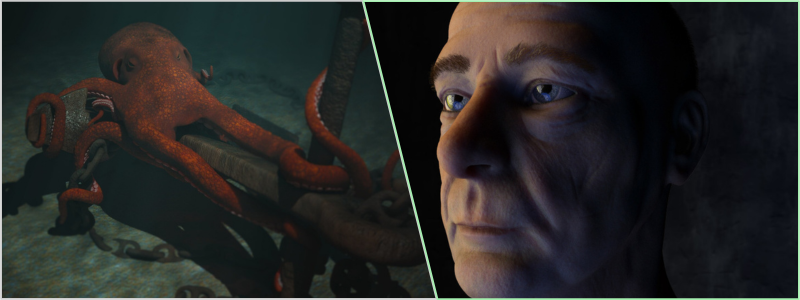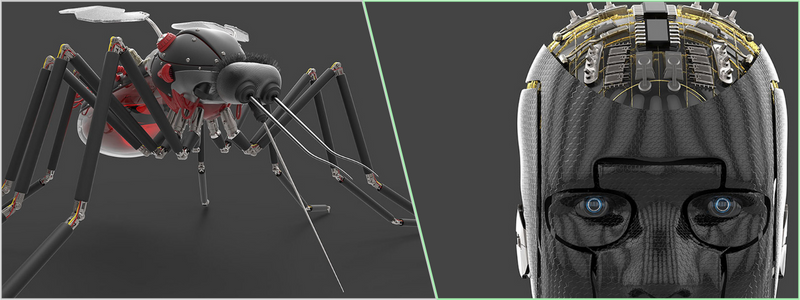This article covers 3D virtual reality animation rendering services – a helpful guide for companies and firms. What immediately comes to mind when the term “3D animation” is mentioned? Do you imagine your favorite video games or those cartoon movies with 3D character animations that you enjoyed as a child? Or perhaps you think of the wonders of virtual reality. While these things all involve 3D animation in one form or another, not all 3D animations are the same per se. 3D animation has different categories or types, and each one has increasing degrees of complexity, interactivity, and immersion.
The different types of 3D animation services are immersive, interactive, and passive, although these three have somewhat blurred boundaries. One form of animation that today’s companies and firms are starting to increasingly use 3D virtual reality (VR) rendering. In this article, you will learn about VR animation and how VR designers can help your company in more ways than one.
 Table of Contents
Table of Contents
RELATED: Top reasons for using 3D rendering in the 3D animation process
What is 3D virtual reality animation?
Incorporating virtual reality animation of objects has become indispensable in developing virtual reality apps. Virtual reality designers often include animated animals, humans, and other creatures to create a realistic virtual world that is both immersive and believable. These virtual reality animations enhance the visual experience, contribute to the overall sense of presence, and enable realistic movements and interactions in virtual reality environments.
Some people often confuse virtual reality and augmented reality with each other. However, the VR experience is often much more immersive. VR is an entirely immersive experience for users without interaction with the surrounding physical world. It is often described as the computer-generated or CG simulation of 3D environments that users can interact with.
RELATED: What 3D animation software is used by the best product design companies?
How does it work?
The interaction with a 3D environment is made possible with the help of special virtual reality gear like special digital gloves, a headset, and even toggles at times. The headsets can be standalone, completely wireless, or a combination of wireless and tethered. The immersive experience means that it is possible to render virtual reality in a remarkably realistic way to imitate real life. Many VR developers today choose to make fantasy environments with things and places that are not present in real life. VR allows users to immerse themselves entirely in a world where they can interact with others in an alternate reality, learn, play, make art, or explore.
Virtual reality rendering services offer unlimited opportunities to develop interactive 3D environments with different visual styles. Whatever VR environment is being developed, whether it is an interactive cartoon or a video game, an entire team of people is in charge of the conceptualization and programming of the environment. It is where the expertise and knowledge of 3D animator designers enter the picture. It is the responsibility of 3D animator designers to bring VR environments to life. 3D animators rig, skin, and pose the character in ways that suit the story.
The 3D animator designer also fleshes out the environment by making natural and vibrant surroundings. The specific type of surroundings VR designers create often depends on the form of VR experience being developed. For instance, VR designers may include magical characters, medieval homes, and vibrant and lush foliage in a game with fairytale surroundings. These carefully crafted VR environments transport users to fantastical realms, allowing them to explore and interact with a visually stunning and immersive world.
RELATED: A complete guide to using 3D architectural animation services for your company
Types of 3D VR animation
3D virtual reality rendering has different types, and 3D modeling design companies specializing in these can help you include them in your company’s workflows. Each 3D VR rendering type is unique, with various benefits offered to the 3D animator designers and the end-users.
CGI animation
Even though the computing powers of the hardware being used generate everything in a virtual environment, CGI or computer-generated imagery animation is named as such because it perfectly explains what takes place under the hood. This form of animation involves creating lifelike visuals and realistic simulations using advanced computational algorithms and graphics techniques. CGI animation enables the creation of stunning virtual worlds, characters, and objects that can be seamlessly integrated into virtual reality experiences, captivating users and enhancing their sense of immersion.

Experienced video services designers use CGI 3D animation to add life to video games, training simulators, short cartoons, and feature films. A 3D animator designer uses software to take a digital puppet called a character rig. They will define the preferred position and pose and make the most out of the motion paths known as splines for animating the model using keyframes. This type of animation is also notably often referred to as 3D animation.
RELATED: How much does 3D animation cost & rates for product marketing video services?
Immersive VR animation
3D animator designers also use software to directly develop character movements in a virtual environment using immersive VR animation. This approach interestingly allows VR designers to unleash their creativity better by visualizing how the potential player interacts with an NPC, this or that object, and the rest of the people connected to the metaverse, the same server, and others.
Motion capture animation
Motion capture animation, or mocap, is the most expensive 3D virtual reality rendering method because VR designers need to involve real human actors. Actors wear special suits and perform like it is part of a movie. Meanwhile, every movement is recorded by specific hardware. Once all the character movie sets or scenes are recorded, the VR designers process the acquired data to turn them into smoothly animated characters.
RELATED: What are the different types of 3D rendering services?
Uses and applications of 3D VR rendering
Today’s industry sees different benefits and applications of VR animation. There are studios specializing in VR-featured cartoons or ads, while others play around with video games and apps. VR animation can also be used for these and other purposes. Depending on the project’s scope, budget, and product, you can choose VR animation, 3D, or mocap techniques. It is also essential to define if you want to hire in-house employees to elaborate on the animation and augment effectively or if you will outsource the entire process to a third-party professional studio.
3D animation in VR apps
3D animation designers use a selection of professional software to bring digital realms to life when developing virtual reality apps. You may need a dedicated team of several experts in their specific fields. For example, if you want a mocap animation, you must work with real actors and invest in suits and lots of hardware. Alternatively, if you wish to go for 3D animation, you need a team composed of 3D modelers, 3D animator designers, riggers, motion designers, textures, and more. Whatever your choice, outsourcing the job to a third-party animation company is often better.
RELATED: How virtual reality rendering is changing the 3D design service industry
Animation in virtual reality games
VR unquestionably carved its niche in the game development industry. Despite the different trends in animation, CGI and motion capture are the two techniques that are most commonly used to make characters move in the digital world. Game development studios work with real human actors and record their movements. The gathered data will then be translated into the earlier developed 3D models. But with CGI, the whole process becomes manual.
Before the animation stage, VR designers develop a mesh and give it the preferred shape, and the mesh’s topology is also adjusted. It will then be unwrapped, and the 3D character design studio will texture, rig, and skin the character and only animate everything afterward. The 3D animator designers will use software to establish poses and keyframes so that the 3D model will move like a real being. This workflow might not be as popular yet though it offers many benefits.
RELATED: How much does a 3D character modeling service cost for 3D artists & firms?
Animation in virtual reality videos
Animation in virtual reality videos, such as VR ads, movies, and other video streaming-related products, is a cornerstone underlying everything on-screen. 360-degree VR films have been enjoying remarkable popularity with the launch of many headsets that support virtual reality technology in the market. Animating elaborate and full-size 3D character animations for cartoons requires more time than a similar process in game development since every movement must be unique and distinct.
Animated 360 virtual reality movies allow viewers to enjoy a more immersive experience and feel like participating in different scenes. 360 VR cartoons created by character rigging and animation designers may seem like they are made for kids, but these movies can be entertaining for adults.
RELATED: What is 3D rigging and how is it used for 3D character animation?

What does the future of 3D virtual reality animation rendering services look like?
3D virtual reality animation rendering services are undoubtedly the future of metaverses. As VR technologies improve and advance, they will continue to push the limits for different industries. It is safe to say that 3D VR/AR companies will continue to have their hands full as they animate objects, creatures, animals, and humans for the digital realms. The technologies supporting VR animation are anticipated to improve alongside the growing demand for metaverses, VR apps, and games. This surge in demand will also give rise to more VR firms and studios relying on these products.
As the industry expands, advancements in VR technology will fuel the growth of the VR animation sector. The virtual reality market is undergoing a remarkable surge, with a projected global market size set to attain a substantial value as it expands rapidly. Virtual reality technology has revolutionized animation, enhancing spatial understanding and allowing for more complex imagery. VR interfaces boost productivity and collaboration among animators, while VR apps transform the viewing experience. As VR technology evolves, we can expect more advanced animation tools and increased applications in animation.
How Cad Crowd can assist
Whatever the nature of your project, whether you are starting from scratch or are looking to bring in professional help to wrap up a project in time for a deadline, our flexible 3D animation services are customized to suit the demands of your project. We work with a variety of 3D animation companies and freelance 3D modeling experts to provide a comprehensive range of CAD services for any scale of the project. Contact us for a free quote.
